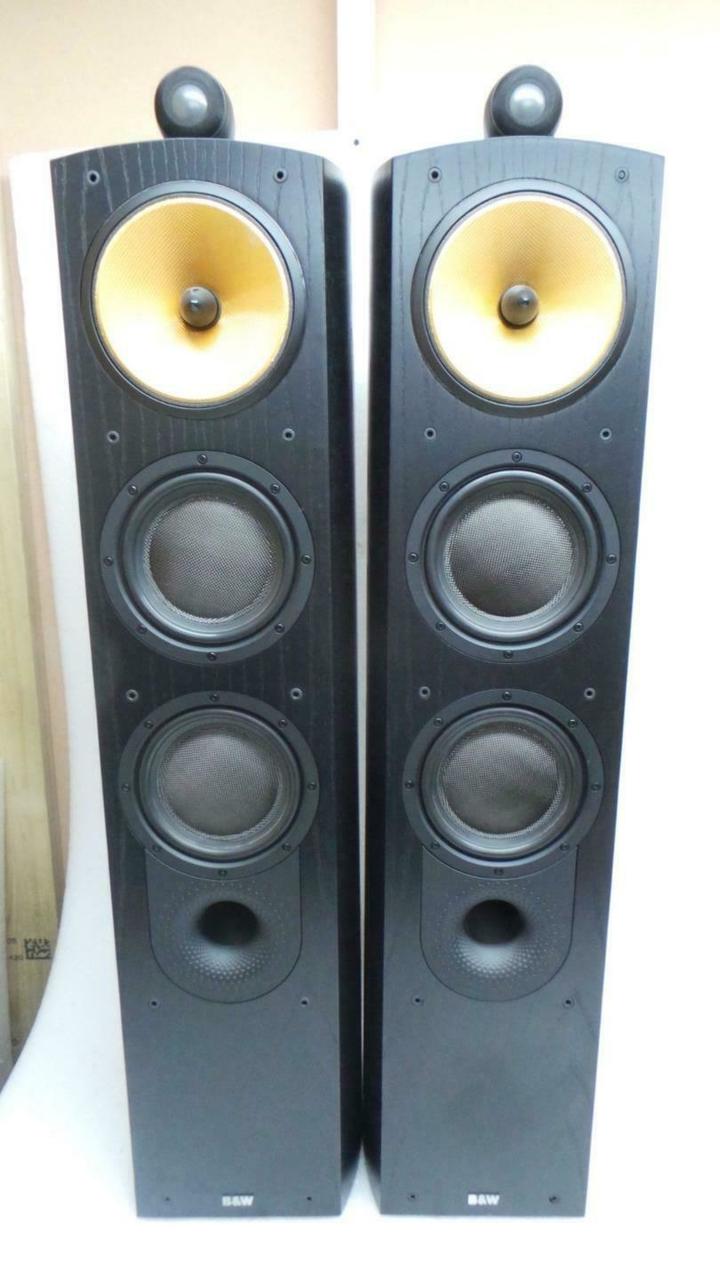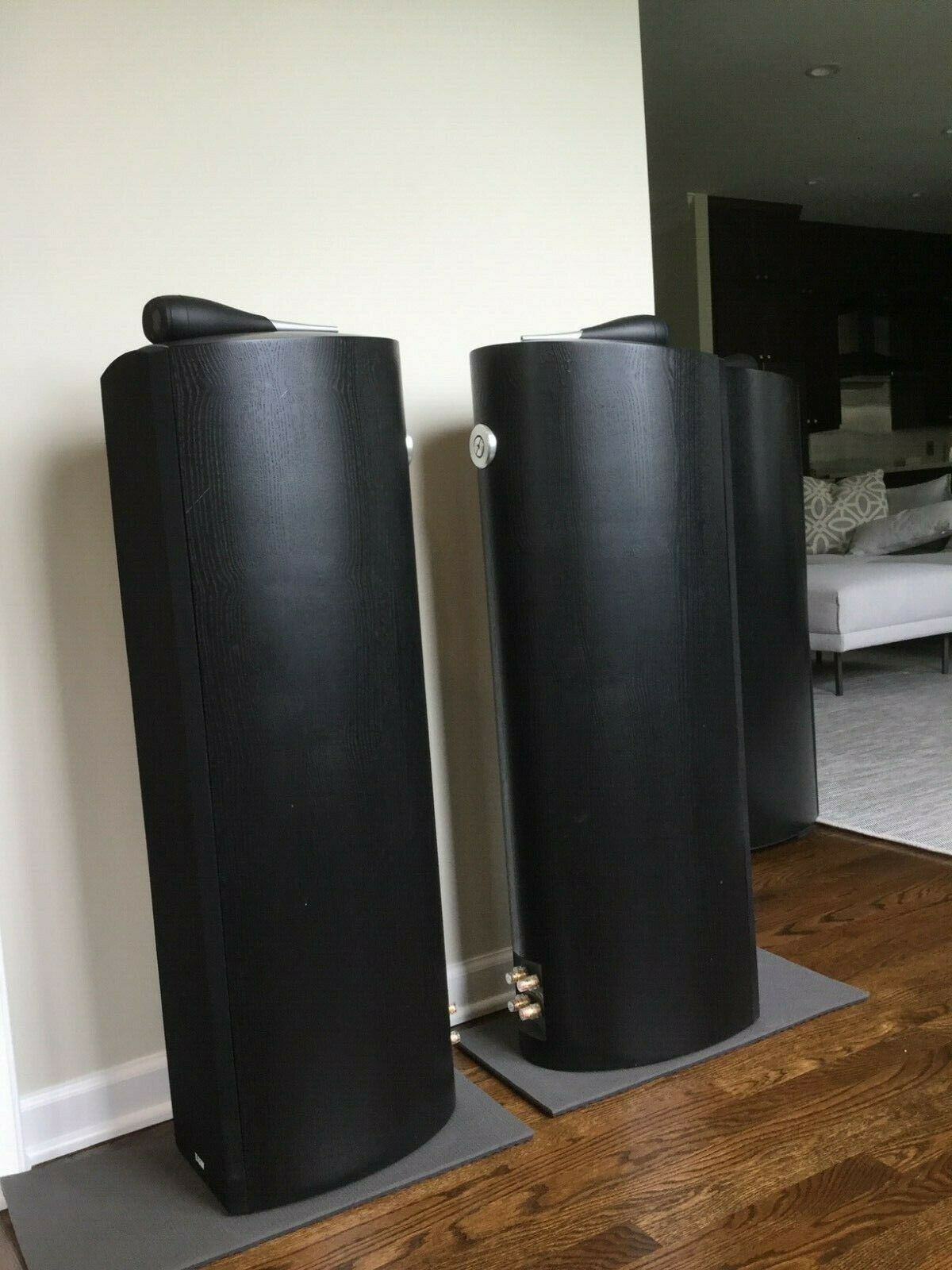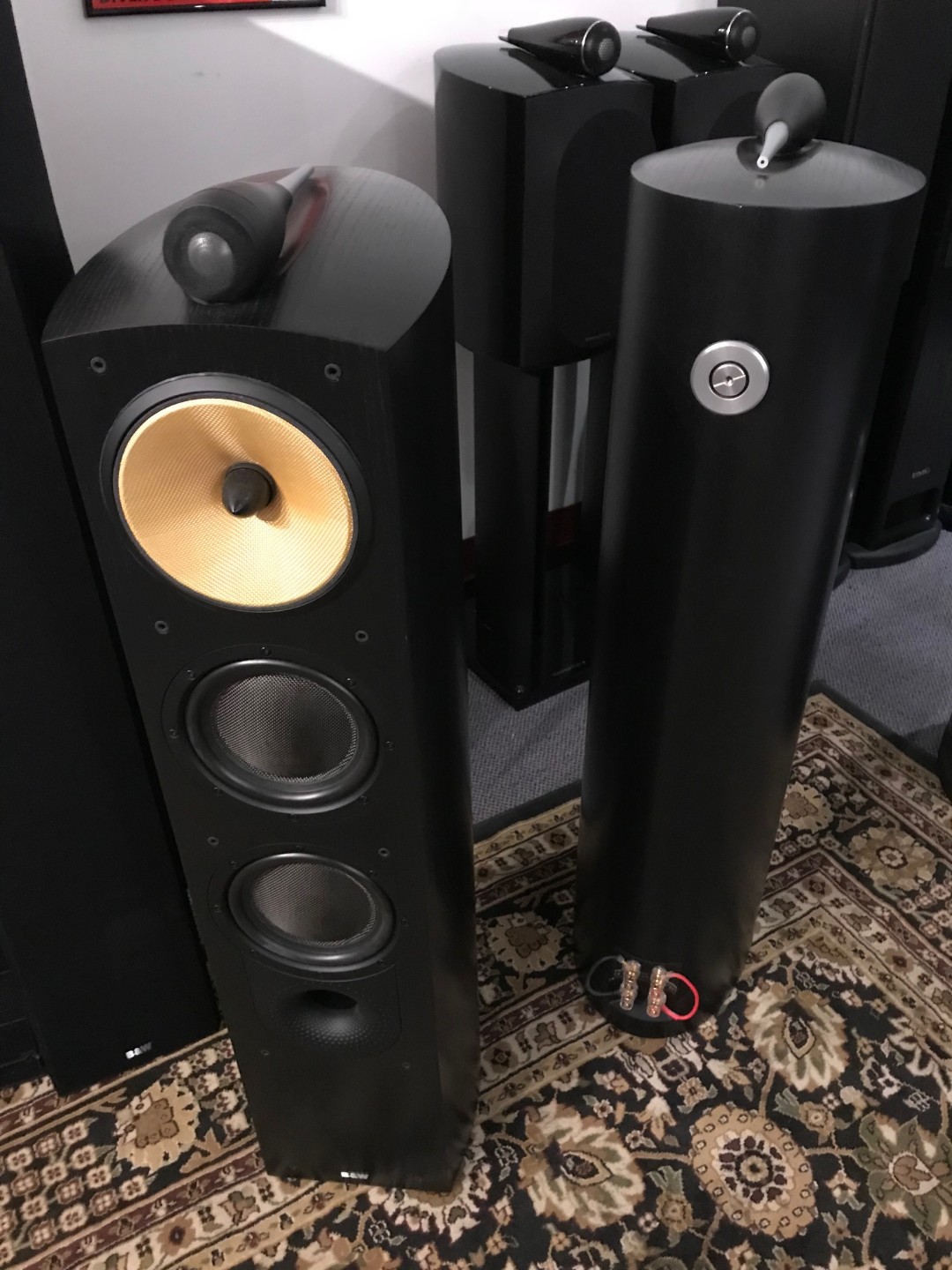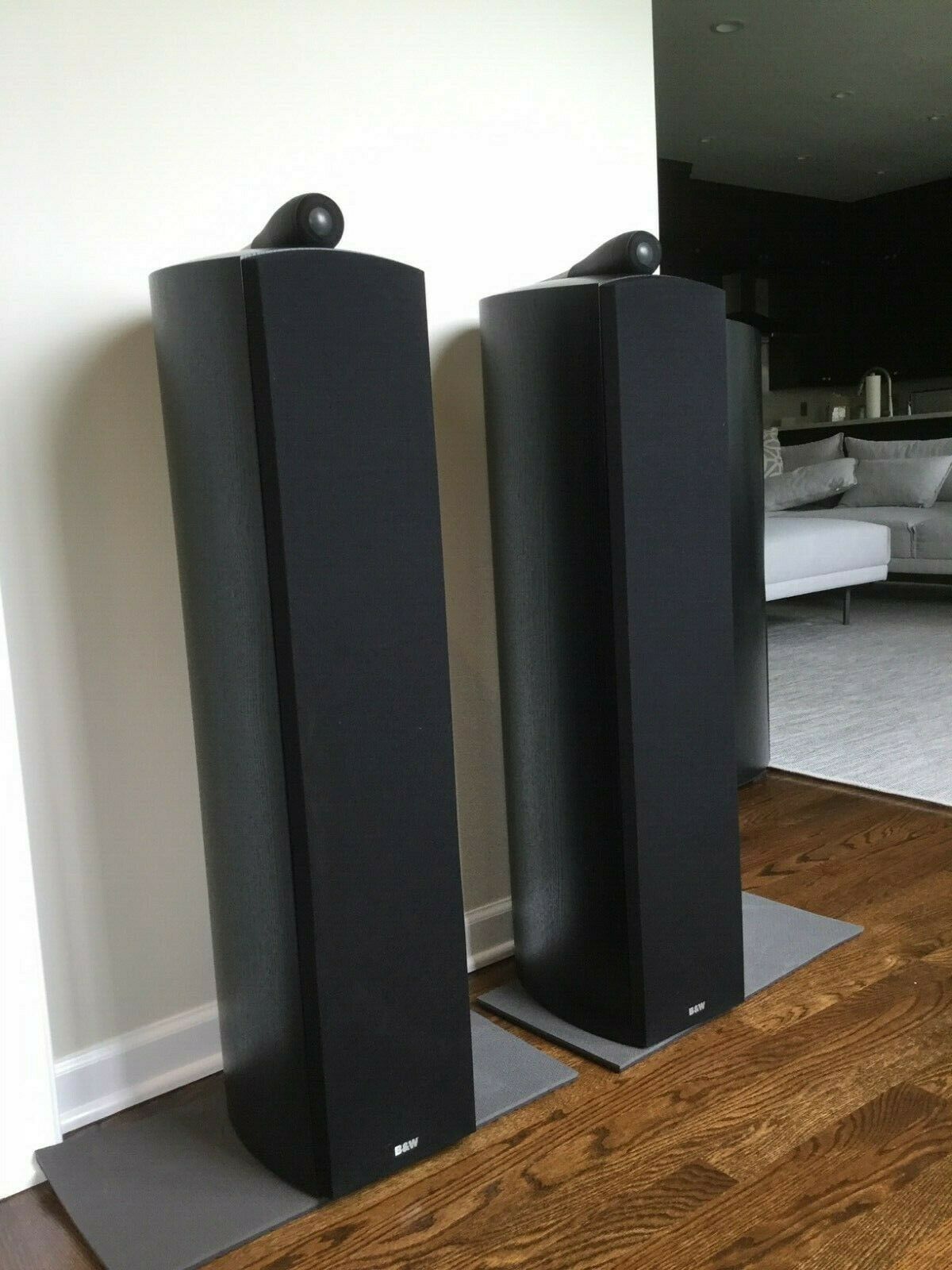D e s c r i p t i o n 3-way vented-box system
Drive units 1 x 25mm metal dome high-frequency
1 x 150mm woven Kevlar® cone FST midrange
2 x 165mm paper/Kevlar® cone bass
F requency re s p o n s e 45Hz – 20kHz ± 2dB on reference
axis
S e n s i t i v i t y 89dB spl (2.83V, 1m)
Nominal impedance 8W (min 3.0W)
Power handling 50W – 200W into 8 ohm on unclipped
programme
D i m e n s i o n s Height: 1015mm Width: 238mm
Depth: 344mm
Dare to compare
The 804s were compared to my MartinLogan Aerius i speakers, not for so much as what the differences were, but more for what both of these very different products bring to the table. Most would argue that a fairer comparison would be between the (now discontinued) SL3 and the Nautilus 804, and I tend to agree. But because I didn’t own the SL3s, I had to make do.
The Aeriuses, despite being the less expensive speaker, still offered a unique perspective on the music. They can portray a fine sense of delicacy and airiness (no pun intended) to the midrange, which is the hallmark of a fine electrostatic design. The Aerius has always excelled at small-scale music, solo voice, chamber music, jazz ensemble. It still does. There is no arguing that the baby Logan was designed to satisfy music lovers with small rooms, and perhaps more distinct music preferences. Partnered with the Krell KSA-200S, however, I don’t think that I have ever heard a pair of Aeriuses sound quite so, ahem, full range. The Krell certainly mitigates some of the areas where this speaker is perceived as weak.
The Nautilus 804s, on the other hand, are far more capable in terms of presenting the dynamic portrait of a broader range of music. They just seem more comfortable handling a larger variety of musical formats. They are also far more articulate and defined in the lower registers, which has always been a weak point for the Aeriuses. The midrange on both speakers is superb; however, I did find the Nautilus 804s more revealing on some music. Imaging is largely a judgment call. If you prefer a LARGE presentation, then the Aeriuses will be your cup of java; however, if you prefer more focus, and specificity, then your needs will be met more by the Nautilus 804s. This is not to say that the 804s sound small; they don’t. They just don’t have the pervasive bloom that most panel speakers exhibit. Hence I felt like I was more in touch with the perspective presented by the Nautili. Treble presentation is more finely detailed over the Nautilus 804s, the Aeriuses sounding perhaps a bit rolled off or rounded by comparison.
Both are excellent speakers; however, the 804s seem to fit the bill as being more flexible in terms of what they can do with a larger variety of music. It’s interesting to note that the physical footprint for both speakers is very similar, yet the 804, by virtue of its shorter height, seems less physically intrusive.
Bring it on home
I think that the B&W Nautilus 804 is certainly a fine product. It has, for me, set new standards as to what I expect to hear from B&W in the future. The Nautilus 804s offer a composed and refined midrange, seductive highs, and an almost electrostatic-like coherence — all in a compact enclosure. They can also grow with your system and reveal each change along the way. Like true thoroughbreds, they will exploit what they are given to work with. While the competition is stiff in the $3500 price category, with a number of high-quality speakers available, not many will exhibit the 804’s well-voiced sonic mix, great looks, and manageable footprint that makes it ideal in small to medium-sized rooms.
In the end, the B&W Nautilus 804 never failed to communicate to me, no matter what I was listening to — Bach, Bob Marley, or Harry Connick. The essence of the music was always there.




